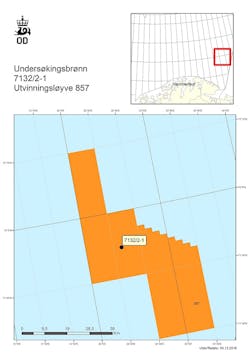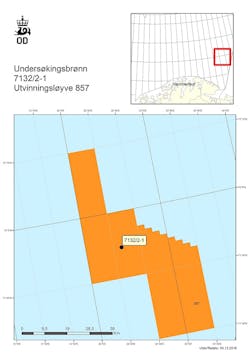Equinor Energy AS has plugged exploration well 7132/2-1, which was targeting the Gjokasenin prospect in production license 857 in the southern part of the Barents Sea (OGJ Online, July 18, 2018). The well is dry.
The well was drilled to a vertical depth of 852 m subsea with Seadrill’s West Hercules semisubmersible mobile drilling facility about 175 km north of Vardo in 293 m of water. It was terminated in the upper part of the Snadd formation in the Late Triassic.
The primary exploration target for the well was to prove petroleum in reservoir rocks from the Middle and Early Jurassic Age (the Sto, Nordmela, Tubaen, and Fruholmen formations). The secondary exploration target was reservoir rocks from the Early Cretaceous and Late Triassic Age (upper part of the Snadd formation).
In the primary exploration target, the well encountered about 15 m of sandstone reservoir with good reservoir quality in the Sto. In the Nordmela, Tubaen, and Fruholmen formations, the well encountered about 25 m of sandstone reservoir with very good reservoir quality.
No reservoir rocks were encountered in the secondary exploration target in the Lower Cretaceous. In the upper part of the Snadd formation, the well encountered a water-filled sandstone reservoir totaling about 30 m with moderate-to-good reservoir quality.
Extensive data acquisition and sampling have been carried out on the exploration well—the first in the license. The drilling facility will now drill wildcat well 7132/2-2 in the same production license.


